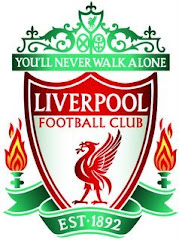Children in the Darkness *
There are children in the darkness
Who have not seen the light
There are children in the darkness
Who someone will teach to fight
Chalk and blackboards will not be
To this door there is no key
From this life they can not flee
And these children are not free
Could we simply light a candle
Could we give them half a chance
Could we teach them how to read
Could we teach them how to dance
Or will a war consume them
Their body and their soul
Will their life and blood be poured
Down some endless thirsty hole
Back into the darkness
From which there is no flight
Back into the darkness
Into which there shines no light
~ Henry M Bechtold
***
The author, Henry M Bechtold was often in Vietnam which he felt was where he belongs to. The Vietnam War was raging at that time, and he witnessed the horrors of war. He was inspired to write this poem when he saw a photo of a small boy with a helmet and an automatic rifle while watching the news programme on TV. This happened on Christmas 2009.
The poem describes the situation of the children suffering in war. It also speaks of the privileges every child should or would have, in contrast to those who are missing out. Their future are bleak as they received little or no education, and also have to endure health problems (as shown in the previous poem, Rainbow Death), etc.
***
Point of viewThe persona is anti-war and is concerned about the consequences of war on children.Evidence :
"There are children in the darkness Who have not seen the light ""Could we teach them how to read Could we teach them how to dance"
"Or will a war consume them Their body and their soul"
Elaboration :
The persona opposes to war due to the harm it could bring to children. Besides causing physical damage to the children, war also results in loss of privileges of what every children should have, such as education. Therefore, war could "consume" "their body and their soul".
Besides that, the poet also demonstrates a good understanding of the conditons of children during war. This is probably because of his previous involvement in the Vietnam War. The brutal treatment of children still etched vividly in his mind. He felt that they should receive proper education as well as the rights to freedom, instead of fighting and enduring the war at such a young age, otherwise their future would be in total darkness. They may either suffer severe wounds or health problems or having no essential skills to obtain employment in the future.
The poem draws sympathy for the children and serves as a reminder to the effects of war on children, who are ignored and neglected.
Situation and Setting
The children are trapped and "consumed" amidst the chaos of war. They are unable to escape from their predicament.
Evidence :
"There are children in the darkness Who have not seen the light"
"Will their life and blood be poured Down some endless thirsty hole"
"Back into the darkness From which there is no flight"
Elaboration :
The children experienced the tragedies of war; the violence and inhumanity of it. They are caught in it and had no means of escape, as they are neglected and cannot flee without the grown-up's help. Therefore, they are subjected to being tortured, inescapable.
The poem also states that "their life and blood be poured" "down some endless thirsty hole", indicating that men is still thirsty for war and glory, totally oblivious to the children's needs. This destroys their childhood, not having seen the "light", engulfed in "darkness from which there is no flight".
Language and Diction
The author is able to connect to the reader. Good use of literary devices and figurative language is used to convey his message. He also make use of contrast, repetition and rhetorical questions.
Evidence :
"Chalk and blackboards will not be To this door there is no key"
"Could we simply light a candle Could we give them half a chance"
"Will their life and blood be poured Down some endless thirsty hole"
"Back into the darkness From which there is no flight Back into the darkness Into which there shines no light"
Elaboration :
In the rhetorical questions in stanza 3 where the author emphasises that the children miss out a lot compared to their peers, "we" is used to make the readers feel connected. It also shows a contrast between children suffering in war and those who lead a normal life, thus evoking sympathy for them.
Furthermore, the "chalks" and "blackboard" symbolises education, for which "there is no key" to the "door", indicating that the children have no opportunities to be sufficiently educated. Personification is also used in the children's body and soul being "consumed by war", showing that war affects them in all aspects, both physically and mentally. The "endless thirsty hole" describes the war robbing the children of their rights.
In addition, The contrasting words such as "light" and "darkness" is used to highlight the children's condition, where the "light" symbolises the innocence of the children, which "shines no light" in the darkness and we could not "simply light a candle" to protect their innocence, as it is far too exposed to the brutality of war.
Personal response
This poem aims to convey the message of suffering children in war, raising awareness about the implications of war have on them. To me, I felt very fortunate not to be one of those children who have to endure the war besides sympathising with them. I think that we should appreciate what we have nowadays, as there are many children out there who do not have them. The impact of war on them certainly could not be removed. All in all, it is a very meaningful poem.



No comments:
Post a Comment